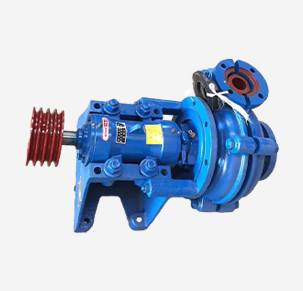Basque
- Afrikaans
- Albanian
- Amharic
- Arabic
- Armenian
- Azerbaijani
- Basque
- Belarusian
- Bengali
- Bosnian
- Bulgarian
- Catalan
- Cebuano
- Corsican
- Croatian
- Czech
- Danish
- Dutch
- English
- Esperanto
- Estonian
- Finnish
- French
- Frisian
- Galician
- Georgian
- German
- Greek
- Gujarati
- Haitian Creole
- hausa
- hawaiian
- Hebrew
- Hindi
- Miao
- Hungarian
- Icelandic
- igbo
- Indonesian
- irish
- Italian
- Japanese
- Javanese
- Kannada
- kazakh
- Khmer
- Rwandese
- Korean
- Kurdish
- Kyrgyz
- Lao
- Latin
- Latvian
- Lithuanian
- Luxembourgish
- Macedonian
- Malgashi
- Malay
- Malayalam
- Maltese
- Maori
- Marathi
- Mongolian
- Myanmar
- Nepali
- Norwegian
- Norwegian
- Occitan
- Pashto
- Persian
- Polish
- Portuguese
- Punjabi
- Romanian
- Russian
- Samoan
- Scottish Gaelic
- Serbian
- Sesotho
- Shona
- Sindhi
- Sinhala
- Slovak
- Slovenian
- Somali
- Spanish
- Sundanese
- Swahili
- Swedish
- Tagalog
- Tajik
- Tamil
- Tatar
- Telugu
- Thai
- Turkish
- Turkmen
- Ukrainian
- Urdu
- Uighur
- Uzbek
- Vietnamese
- Welsh
- Bantu
- Yiddish
- Yoruba
- Zulu
Telephone: +86 13120555503
Email: frank@cypump.com
Ira . 06, 2024 23:19 Back to list
High-Quality Slurry Pump Cover Plates | Durable & Reliable Solutions
Understanding Slurry Pump Cover Plates Importance and Insights
Slurry pumps are essential in various industries where the transport of abrasive and thick mixtures of liquids and solids is required. One crucial component of these pumps is the cover plate. In this article, we will explore the significance of slurry pump cover plates, their functions, materials used, and the factors to consider when selecting one for your specific needs.
What is a Slurry Pump Cover Plate?
A slurry pump cover plate is a protective component that encloses the pump's internals and provides a sealing mechanism between different parts of the pump. This plate plays a vital role in maintaining the pump’s efficiency and longevity by preventing leakage and keeping abrasive materials contained within the system.
Functions of the Cover Plate
1. Protection The primary function of the cover plate is to protect the internal mechanisms of the pump from external elements. This is particularly important in environments where the pump operates under extreme conditions or with hazardous materials.
2. Sealing The cover plate helps to create a seal that prevents the escape of slurry and contaminants. A well-designed cover plate minimizes wear and tear associated with leaks, thereby enhancing the reliability of the pump.
3. Structural Support Acting as a structural component, the cover plate supports various parts of the pump assembly. This support is crucial for maintaining overall pump integrity, especially during high-pressure operations.
4. Facilitating Maintenance Many cover plates are designed for easy access, allowing operators to perform maintenance quickly. This feature is essential for minimizing downtime and ensuring the efficiency of the pumping operation.
Materials Used in Cover Plates
slurry pump cover plate

The materials used for slurry pump cover plates vary depending on the application and the type of slurry being handled
. Common materials include- Rubber Often used for its flexibility and resistance to corrosion, rubber-coated cover plates are suitable for less abrasive slurries. - Metal Alloys Materials like stainless steel and cast iron provide durability and resistance to wear. They are ideal for handling highly abrasive slurries that can cause significant damage to less robust materials.
- Ceramic Coatings In situations where extreme abrasion is a concern, ceramic coatings can be applied to enhance the wear resistance of the cover plate.
Selecting the Right Cover Plate
When selecting a slurry pump cover plate, several factors should be considered
1. Type of Slurry The composition, temperature, and viscosity of the slurry will influence the choice of material for the cover plate.
2. Operating Conditions High-pressure operations may require more robust materials, while less aggressive conditions may allow for lighter options.
3. Maintenance Requirements Consider how often maintenance will be required and choose a cover plate design that facilitates quick access.
4. Cost Balancing quality and affordability is key. Sometimes, investing in higher-quality materials can lead to lower long-term operational costs due to reduced maintenance needs.
In conclusion, the cover plate of a slurry pump is a pivotal component that ensures efficient operation, minimizes wear, and aids in maintenance. Understanding its functions and the factors affecting material selection can lead to better performance and longevity of the slurry pumping system. As industries continue to evolve, staying informed about the advancements in slurry pump technology can further enhance operational efficiency.
-
Custom Drilling Mud and Slurry Pump Supplier - High Efficiency, Tailored Solutions
NewsJun.10,2025
-
Supply Vertical Submersible Sewage Pump High-Efficiency WQ/QW Pumps Supplier
NewsJun.10,2025
-
Premium Sewage Ejection System & Pumps Efficient Waste Removal
NewsJun.09,2025
-
Premium Wholesale Slurry Pump Impellers Durable & Efficient Slurry Handling
NewsJun.09,2025
-
Top Sewage Pump Companies Durable Industrial Solutions for Efficiency
NewsJun.09,2025
-
Heavy Duty Slurry Pumps - OEM High Performance & Bulk Wholesale
NewsJun.09,2025










